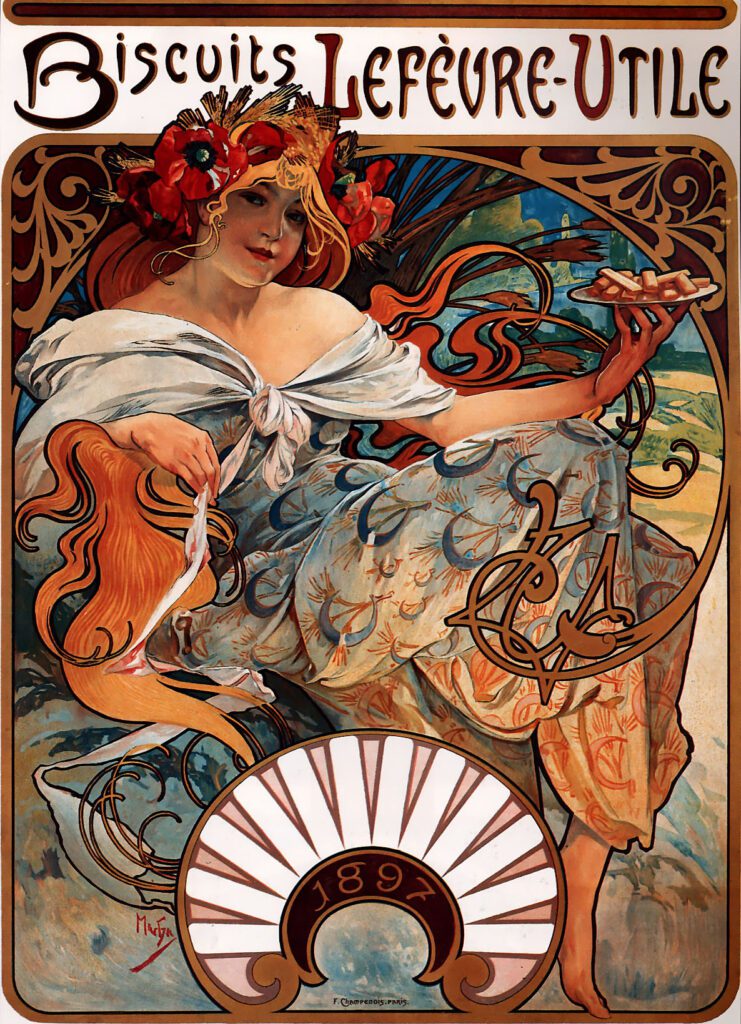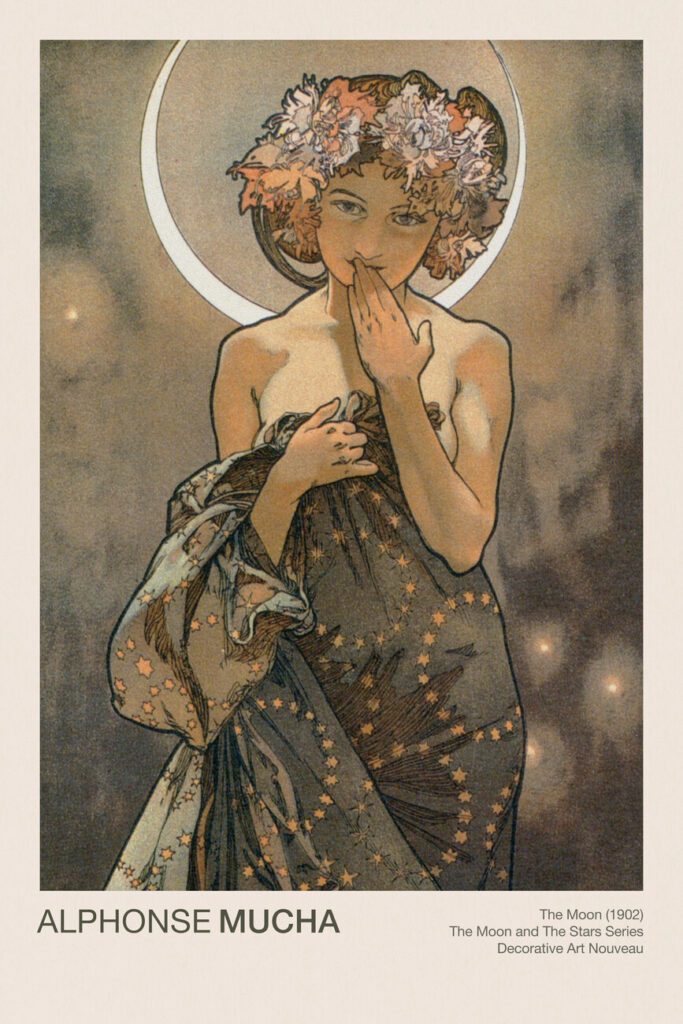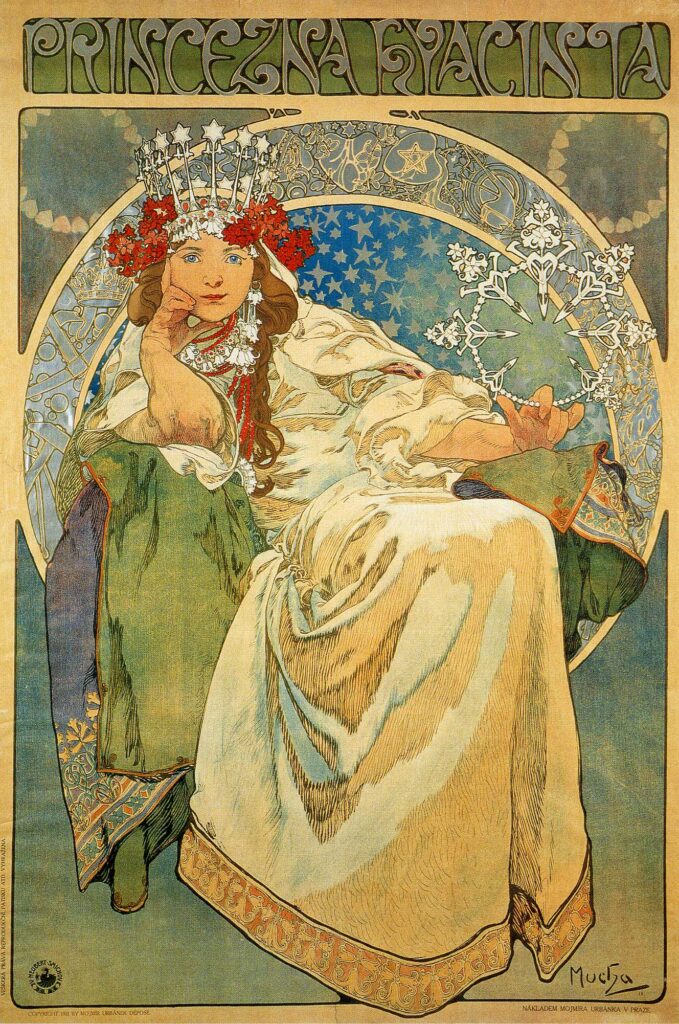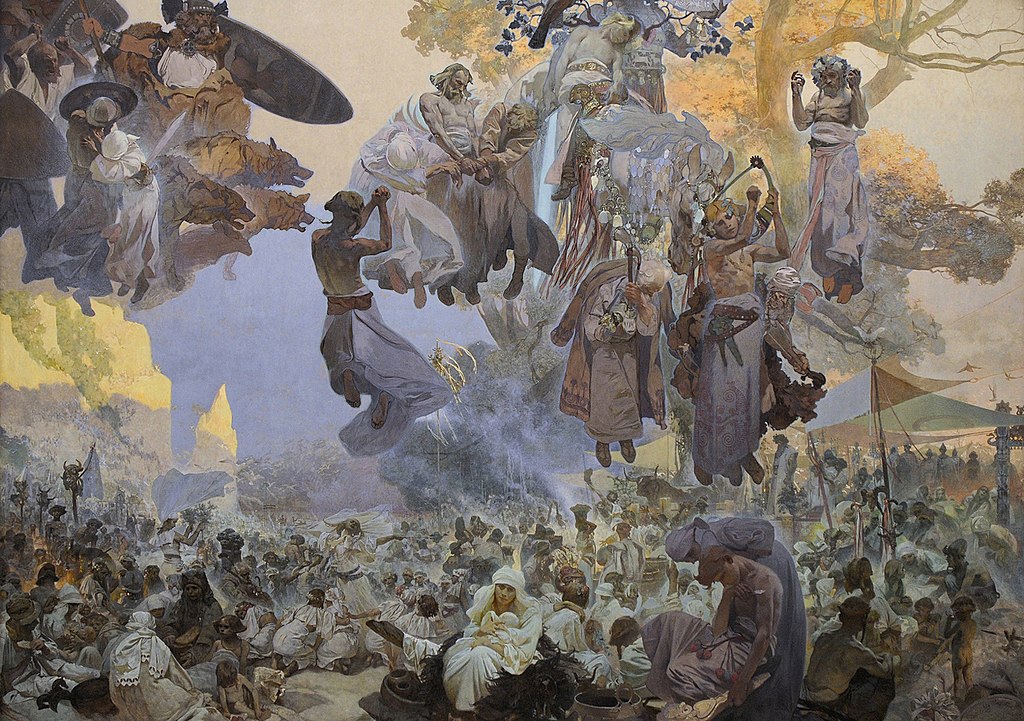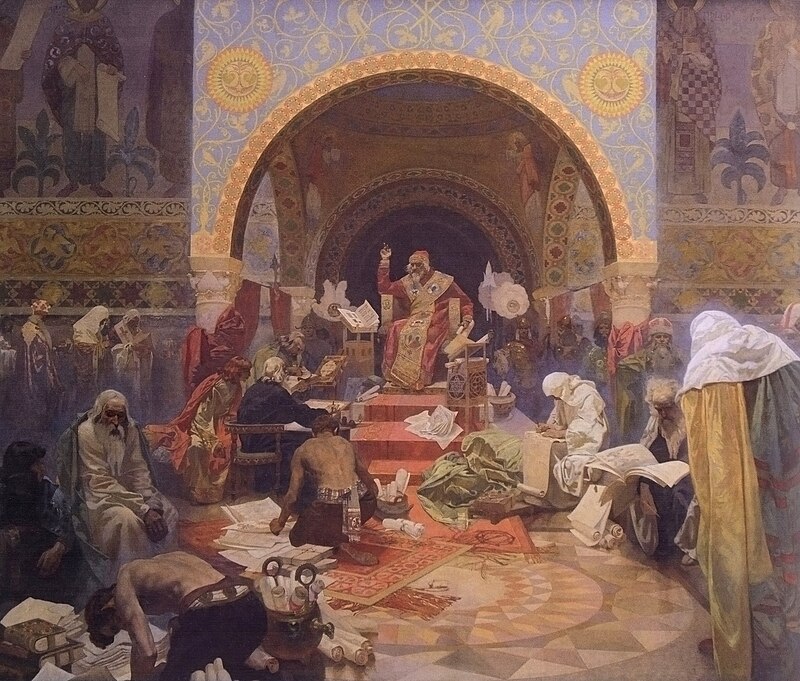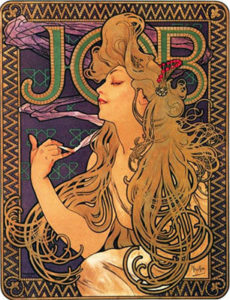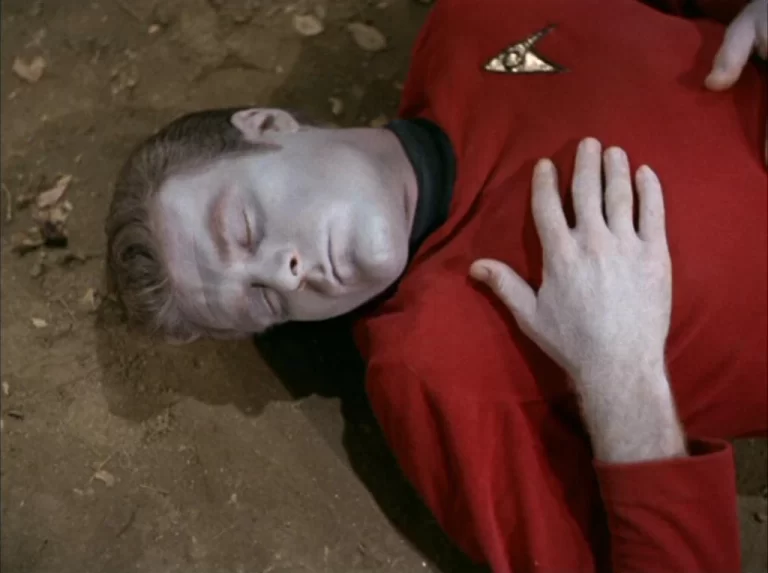(Originally posted on December 6, 2017)
I’m certain you’ve seen an Alphonse Mucha (1860-1939) print at some point in your life. So many of his prints have saturated the artistic landscape that I think it’s inevitable you’ve seen one. The problem is you probably didn’t know the man’s name. Which is a crime.
Alphonse Mucha was the finest example of the Art Nouveau movement of the early 20th century. Art Nouveau didn’t just involve paintings and prints, but furniture, architecture, interior design, etc. Strong, sweeping lines, naturalistic scenes and a general organic feel characterized the movement. Which are all interesting, but I’m more interested in the line work, which you can see reflected in a lot of modern graphic arts, including comics and animation styles. More specifically, I’m interested in the Czech artist Alphonse Mucha.
Oh, other great artists contributed to the movement, but Alphonse stood out. He took the basic ideas and created a unique brand which lasts to this day. The great comic illustrator Charles Vess counts him as one of his primary influences. I would say that Mucha influenced the entire subset of graphic (or “commercial”) art.

Art Nouveau had a graphic style with sweeping lines and exaggerated flourishes. Alphonse combined that with a solid, very competent illustrative style and a great eye for colors and symbols. He did many illustrations for advertisements, handbills and posters, which is probably how the style trickled down through so many advertisements over the years. He combined that with beautiful women and naturalistic scenes, overlaid with precise, geometric patterns. This became more than a mere aping of Romance images. It became a style unto itself. The sum of the parts is, well . . . just look at his art. It speaks most eloquently.
Alphonse started out as a singer and his art was merely a ‘hobby’ until 1894, when he came to the attention of Sarah Bernhardt, who took an instant liking to his style and employed him for years. He expanded his hobby to a full-time career, culminating in his painting series The Slav Epic. Unfortunately, his Slav nationalism and Jewish roots brought him to the attention of the Nazis when they occupied Czechoslovakia in 1939. After a brutal interrogation, the aged Alphonse succumbed to pneumonia a few months later.
Today I’ve seen several artists use his style for book covers and comics. Outside of the art field, his name isn’t widely known. This is just so the next time you see one of his paintings, you’ll know the man behind it.

